In Photos: Ancient Fish Skull From Siberia
When researchers first looked at a tiny fish skull from 415 million years ago, they classified it as a bony fish. But a new, high-tech look at the fossil shows that it's much more. The fossil has features of bony fish as well as fish made of cartilage, such as sharks, suggesting it is a common ancestor of both. The findings could provide clues about how early jawed vertebrates looked, said Sam Giles, the study's lead researcher and a paleobiology doctoral candidate at Oxford University in the United Kingdom. [Read the story on the ancient fish from Siberia]
Fishy comparison
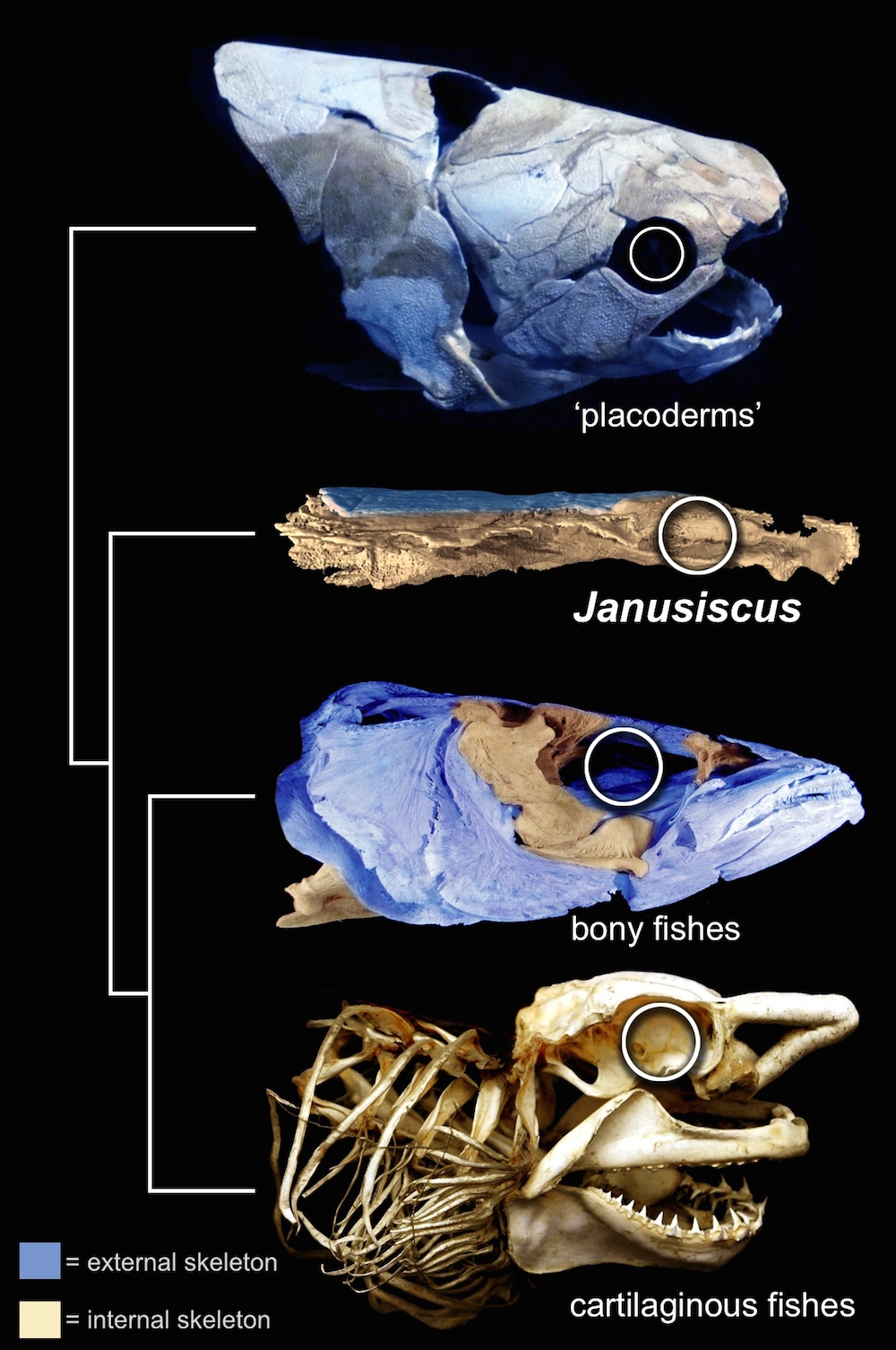
The 415-million-year-old fish fossil (Janusiscus schultzei) has a well-developed external skeleton (shown in blue), a feature that is seen in the common ancestor of bony fish and cartilaginous fishes, such as sharks. (Photo credit: Sam Giles. Placoderm image courtesy of K. Trinajstic)
Circulation signs
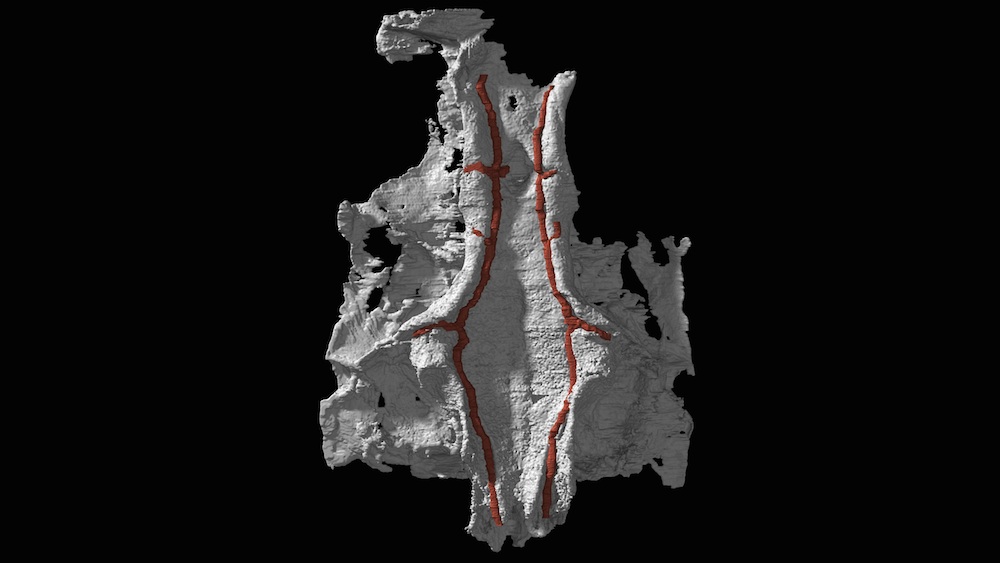
The fossil, from the Early Devonian period, features the remains of blood vessels (in red) on the underside of its head. These blood vessels are similar to those found in cartilaginous fish. (Photo credit: Sam Giles)
Bony fish head
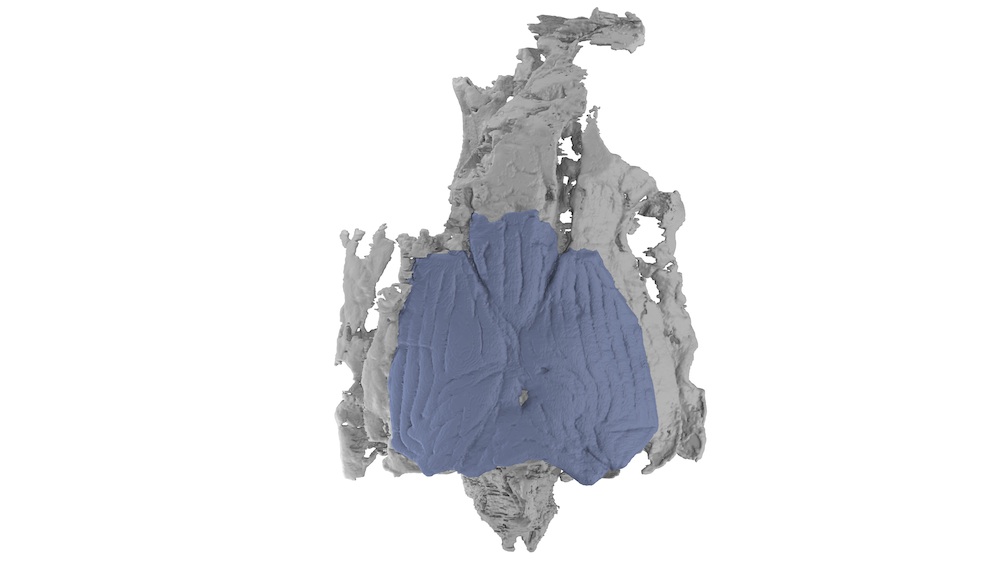
A specialized computed tomography (CT) scan shows the top of the fossilized skull. The skull has features reminiscent of both bony and cartilaginous fish. Here, the bony plates are highlighted in purple. It was once thought that the common ancestor of jawed vertebrates was made of cartilage, which would make sharks and manta rays, which are still made of cartilage, more primitive creatures than bony animals. But this fossil suggests that may not be the case, Giles said. (Photo credit: Sam Giles)
Sign up for the Live Science daily newsletter now
Get the world’s most fascinating discoveries delivered straight to your inbox.
Underside up
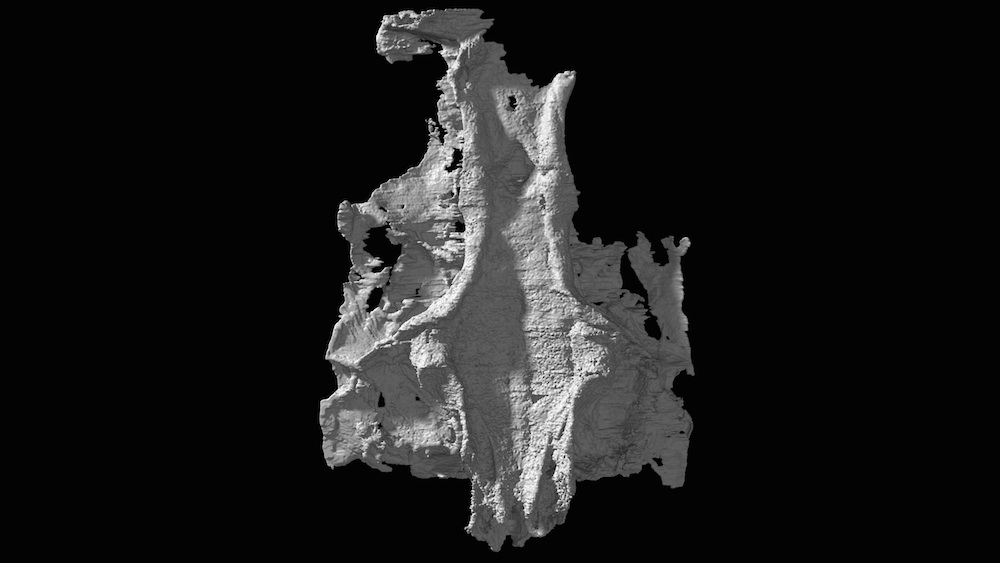
The underside of the bony braincase in the fossilized fish. While the fossil may be one of the earliest common ancestors of jawed vertebrates, the jaw of this fossil is unfortunately missing, Giles said. (Photo credit: Sam Giles)
Tiny skull
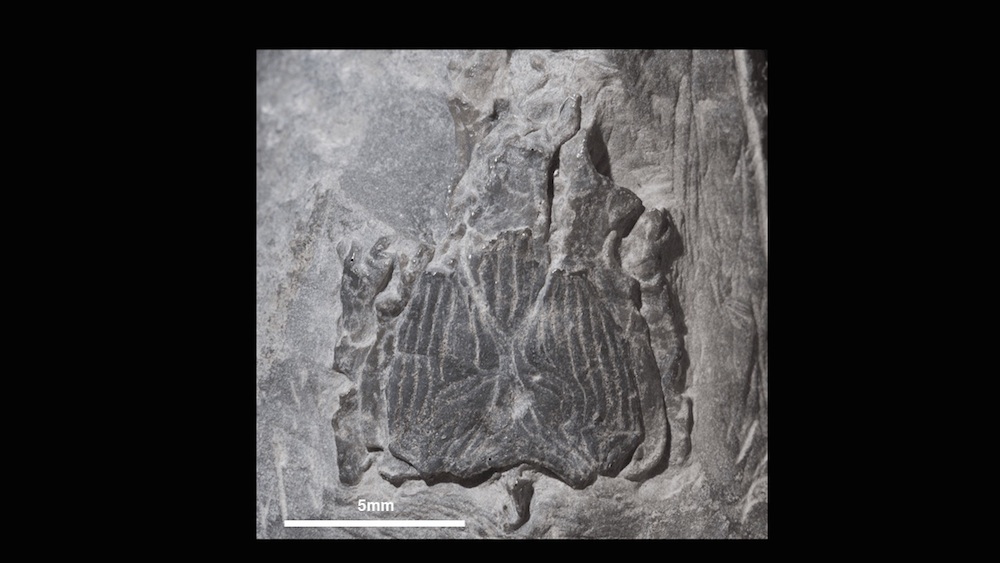
The skull of the ancient fish is quite small, measuring about 0.8 inches long (2 centimeters). There are more than 60,000 living jawed vertebrates today, and this fossil may shed light on how their common ancestor looked, Giles said. (Photo credit: Photograph by the Institute of Geology at Tallinn University of Technology and licensed by CC 3.0)
Cartilage and bone
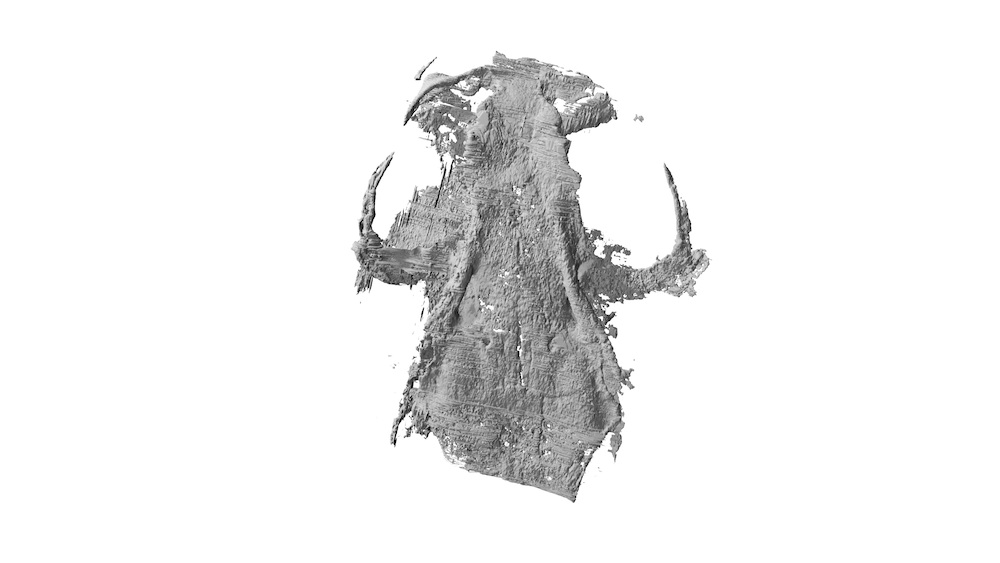
The underside of a 410-million-year-old fossil, also from the Early Devonian, of a cartilaginous fish with a bony brain case. (Photo credit: Sam Giles)
A descendent
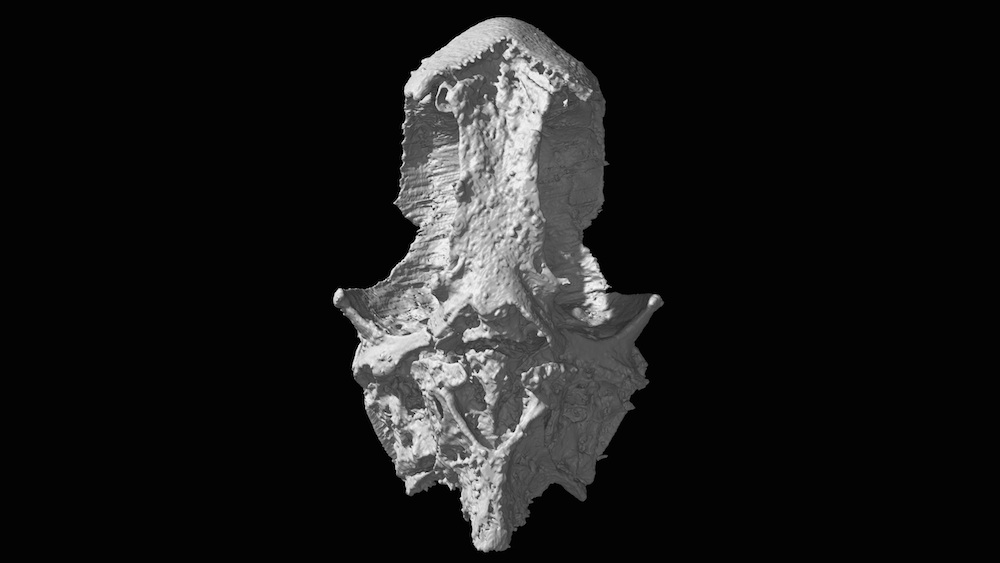
A fossil from the Late Devonian, about 380 million years ago, of a bony fish, showing the underside of its bony braincase. This bony fish has similar features to the reclassified fossil in the new study, such as a sensory line canal, which senses changes in pressure and helps fish avoid predators. (Photo credit: Sam Giles)
Follow Laura Geggel on Twitter @LauraGeggel. Follow Live Science @livescience, Facebook & Google+.

Laura is the archaeology and Life's Little Mysteries editor at Live Science. She also reports on general science, including paleontology. Her work has appeared in The New York Times, Scholastic, Popular Science and Spectrum, a site on autism research. She has won multiple awards from the Society of Professional Journalists and the Washington Newspaper Publishers Association for her reporting at a weekly newspaper near Seattle. Laura holds a bachelor's degree in English literature and psychology from Washington University in St. Louis and a master's degree in science writing from NYU.










